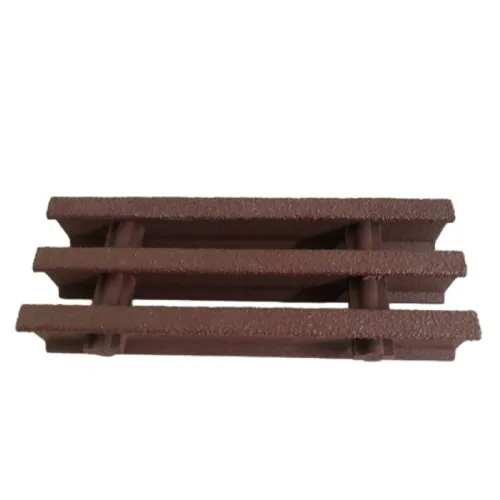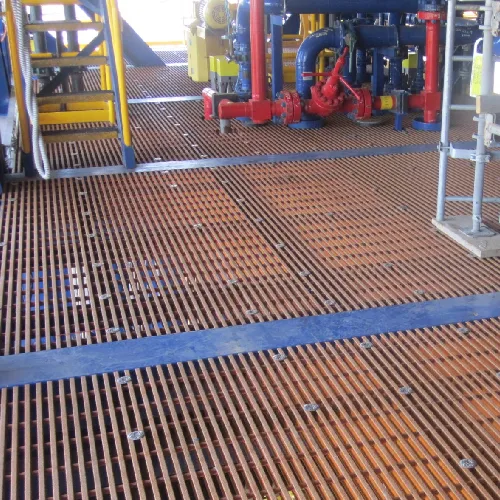loading...
- No. 9, Xingyuan South Street, Dongwaihuan Road, Zaoqiang County, Hengshui, Hebei, China
- admin@zjcomposites.com
- +86 15097380338
- Welcome to visit our website!
FRP Pultruded Gratings: Strong, Corrosion & Slip-Resistant
Anti- Corrosion Cost Effective FRP Pultrusion Grating — field notes from the shop floor
When people ask me about Frp Pultruded Gratings, I don’t start with the brochure. I start with what crews tell me: lighter lifts, zero rust worries, and fewer shutdowns. That’s the blunt truth. This category has quietly replaced steel in plants and on piers because maintenance budgets got tired of corrosion drama.

What’s trending (and why it matters)
Three shifts I see: (1) more vinyl ester for chemical resistance, (2) smarter anti-slip surfaces that hold up in oils and brine, and (3) factory-cut kits to reduce hot work on site. Honestly, the cost parity with steel once you add installation and painting is, well, surprising.
How it’s made — quick process flow
Materials: E-glass roving/mats + resin (isophthalic polyester or vinyl ester), UV stabilizers, pigments, and surface grit. Method: continuous pultrusion through heated dies → recessed tie bar assembly → cure → cutting and edge banding → anti-slip surfacing → QC. Testing: ASTM D790, D638, E84, D635, BS 7976 (or equivalent). Service life: ≈25–40 years in typical industrial exposure; longer in mild environments, real-world use may vary.

Product snapshot and specs
Model frequently requested: Anti- Corrosion Cost Effective FRP Pultrusion Grating, origin: No. 9, Xingyuan South Street, Dongwaihuan Road, Zaoqiang County, Hengshui, Hebei, China. Recessed tie-bar makes it tidy and strong; installers like the weight-to-strength ratio.
| Parameter | Typical Value | Notes |
|---|---|---|
| Bar profile | I-bar / T-bar | Recessed tie bar configuration |
| Resin system | ISO polyester or vinyl ester | Vinyl ester for harsh chemicals |
| Panel thickness | ≈25–60 mm | Custom thickness on request |
| Open area | 40–60% | Drainage and airflow |
| Flexural strength | ≈200–350 MPa | ASTM D790; lab data |
| Flame spread index | ≤25 | ASTM E84 Class 1 |
| Slip resistance | COF ≈0.6 dry / 0.5 wet | BS 7976 pendulum; field varies |
Where Frp Pultruded Gratings shine
- Chemical plants and battery rooms (acid fumes are a non-issue)
- Wastewater walkways and clarifiers
- Marine docks, offshore skids, and splash zones
- Food and beverage platforms (easy washdown)
- Power plants: cable trenches, cooling towers
Advantages: corrosion-proof, low conductivity, non-sparking, easy to cut on site, and to be honest, fewer permit headaches than hot-dip tasks.

Vendor comparison (real-world buying factors)
| Vendor | Origin | Resin Options | Certs | Lead Time | Notes |
|---|---|---|---|---|---|
| ZJ Composites | Hengshui, Hebei, CN | ISO poly / Vinyl ester | ASTM, ISO, CE (as applicable) | ≈2–4 weeks | Cost-effective, recessed tie-bar |
| Global Brand A | US/EU | Poly / VE / Phenolic | Extensive listings | ≈4–6 weeks | Premium pricing |
| Regional Supplier B | APAC | Polyester | Basic QA | ≈1–3 weeks | Budget option; check test data |
Customization, testing, and feedback
Customization: panel size, thickness, grit grade, color coding, UV package, conductive additives, and OEM cut-kits. Recent lab data I reviewed showed ASTM D638 tensile ≈120–170 MPa and ASTM D790 flexural modulus ≈18–24 GPa; E84 came back Class 1. One facility manager told me, “we replaced two paint cycles with none” — not scientific, but it tracks with our field notes.
Two quick case notes
- Wastewater plant, coastal city: Frp Pultruded Gratings on aeration basins. Result: zero rust, improved footing in biofilm conditions after 18 months.
- Battery manufacturing line: vinyl ester version and conductive inserts. Outcome: safer access and no metal corrosion from acid mist.
Standards and compliance pointers
Design to OSHA/ISO access rules; verify load tables, deflection limits, and fire/smoke indices. For Europe, check EN 13501-1 classification; for machinery access, ISO 14122 is your friend. And always validate slip resistance on-site—real floors are messy.
References
- ASTM E84 Standard Test Method for Surface Burning Characteristics of Building Materials.
- ASTM D790 Standard Test Methods for Flexural Properties of Unreinforced and Reinforced Plastics.
- ASTM D638 Standard Test Method for Tensile Properties of Plastics.
- ISO 14122-2 Safety of machinery — Permanent means of access — Working platforms.
- EN 13501-1 Fire classification of construction products and building elements.
- BS 7976 Pendulum test for slip resistance (TRL method).
-
Revolutionizing Industrial Safety with ZJ Composites' Mini Mesh GratingNewsNov.14,2025
-
Premium FRP Profiles and FRP Grating Revolution for Global WholesalersNewsNov.14,2025
-
Ultimate Strength with ZJ Composites FRP Profiles for Wholesale SuccessNewsNov.14,2025
-
ZJ Composites Covered Grating – The Durable Flooring Solution for Smarter Industrial SpacesNewsNov.14,2025
-
Mini Mesh Grating Enhancing Strength and Style in Every ProjectNewsNov.14,2025
-
FRP Pressure Vessels by ZJ CompositesNewsNov.14,2025
-
Transforming Industrial Spaces with Advanced Frp GratingNewsNov.11,2025
